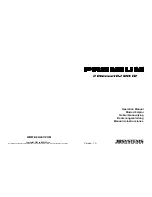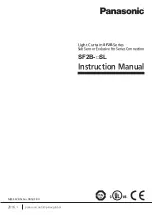
Appendix 2.4 Time constant of the respiratory tract (
τ
exp,
τ
insp)
App.2-3
Appendix 2.4 Time constant of the respiratory tract (
τ
exp,
τ
insp)
Time constant of the respiratory tract is the product of compliance and resistance:
t =
С
× R.
It is necessary to record the time constant on the inspiration and expiration because these val-
ues differ in different situations (
τ
insp
in most cases exceeds
τ
exp
). Thre difference is especially
expressed at the broncho-obstructive syndrome. Therefore the device calculates both parame-
ters for correct selection of inspiration and expiratory time.
Cst
and Rinsp values are measured in the respiratory cycle with inspiration pause. In order to
minimize the error in the calculation of PEEP, in cases of significant decrease of compliance
and increased aerodynamic resistance (respiratory distress syndrome, edema of lungs, bron-
chial obstruction and so on) expiration is divided to 2 phases - fast and slow at the calculation of
τ
exp
, because t of different areas of lungs can significantly differ. Fast one is associated mainly
with the gas flow from the breathing circuit. The slow one is related mainly with the gas flow
from the broncho-pulmonary tract. The ventilator detects
τ
exp
for slow expiratory phase. To elim-
inate the distortion of the result by the expiration part from the breathing circuit (fast phase), the
first 50 ms of expiratory phase are not included in the analysis.
Figure App.2.2 – Time constant on inspiration
Under the conditions of passive expiration, as a first approximation, expiratory flow is described
by the exponential law (RC-circuit model):
F = F
max
exp(-
τ
exp
/t)
(1),
where:
F
max
– peak expiratory flow,
τ
exp
– time constant.
Volume during expiration:
V(t) = Vexp(1 – exp(-
τ
exp
/ t))
(2),
where:
V(t) – current expiration volume,
V
exp
– total expiration volume.
Equation (2) shows that texp is a time during that 63 % of the expiration volume Vexp is re-
moved from the lungs.
Expiration process can be divided into 3 stages:
1) The release of the gas from the circuit.
t
1
F(t)
Expiration
Low phase
t
0
Summary of Contents for MV200
Page 2: ......
Page 8: ......
Page 25: ...2 3 Front panel 2 9 2 3 Front panel Figure 2 1 Front view of the electronic unit ...
Page 124: ...4 21 Open valve function 4 76 For your notes ...
Page 158: ...6 11 Check and calibration of mainstream CO2 sensor 6 8 For your notes ...
Page 160: ...7 Troubleshooting 7 2 For your notes ...
Page 162: ...8 Transportation 9 Storage 10 Disposal 10 2 For your notes ...
Page 166: ...13 commission date mark 12 2 For your notes ...
Page 168: ...14 Maintenance and repair data 14 2 For your notes ...
Page 196: ...Appendix 2 9 Ideal body weight of the patient IBW App 2 10 For your notes ...
Page 200: ...Appendix 3 Electromagnetic environment App 3 4 For your notes ...
Page 201: ...Appendix 4 Pneumatic scheme of ventilator App 4 1 APPENDIX 4 PNEUMATIC SCHEME OF VENTILATOR ...
Page 202: ...Appendix 4 Pneumatic scheme of ventilator App 4 2 For your notes ...
















































